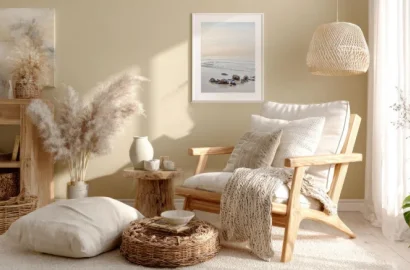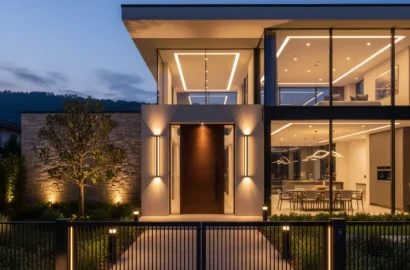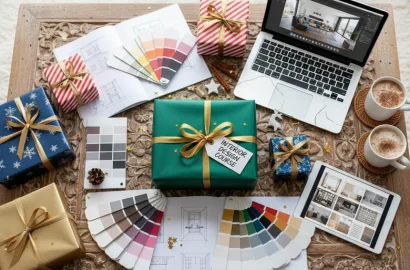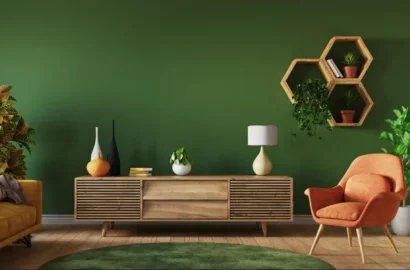Discover what you can expect to earn as an interior designer, where to find the highest paid positions, and how to land a job in this creative and rewarding field
In this breakdown of interior design salaries, we’ll be going through the average salaries of interior designers across the world, as well as highlighting the roles within interior design which pay the highest. But it doesn’t end there! For those of you struggling with salary negotiations, are curious about related roles, or simply want to know the steps to take to land your first job in this dynamic field, we’ve got you covered, too.
Here’s a clickable list of exactly what we’ll be covering:
- 1) Interior design job market and demand
- 2) What is the current demand for interior designers in India?
- 3) Interior designer salaries around the world, from junior to senior
- 4) Industries with the highest interior designer salaries
- 5) Factors that can impact an interior designer’s salary
- 6) How much do freelance interior designers earn?
- 7) How to handle your interior designer salary negotiation
- 8) What do interior designers do and what skills do they need?
- 9) The different roles within or related to interior design
- 10) Step-by-step guide to landing a job in interior design
- 11) Conclusion
Are you ready to learn more? Then, let’s get started!
1. Interior design job market and demand
The interior design industry has seen massive expansion over the last ten years, with the market witnessing global growth of 5.8% between 2017 and 2021 alone, reaching a value of US $115 billion by 2022. Looking to the coming decade, the interior design market is predicted to continue to grow at speed, with an estimated CAGR (Compound Annual Growth Rate) expected to reach 6.4% and a total value of 213.7 billion in the period between 2022 and 2032 alone.
Reasons for this rapid growth are multifarious, with leading factors including extensive real estate sector development from both residential and commercial groups. It’s widely believed in the industry that the middle classes are globally pushing up demand for interior designers due to an overall increase in spending power. With the population of middle-class families expected to increase over the next ten years, the call for interior designers is only going to increase.
Another factor influencing the global demand for interior designers includes rapid urbanization, which will likely boost the demand for interior designers in residential areas. In addition, global governments are increasing their spending on the development of essential town and city infrastructure which will have the knock on effect of pushing up the demand for interior designers even more.
2. What is the current demand for interior designers in India?
The Indian interior design market was valued at US $28.6 billion in 2022, with the sector poised for even more growth over the next five years, according to forecasts based on market reports. Experts predict that the Indian interior design market will exhibit a CAGR of 10.3% between 2023 and 2028.
The cause of this dramatic push for interior design services hails primarily from the significant expansion of the construction sector in the country, leading to an overall adoption of affordable interior design solutions among both residential and commercial property owners.
However, while demand in India for interior designers has soared overall, the commercial space dominates over residential, as business owners seek to both improve the appearance of their workplaces and optimize the efficiency of the space available to them. Analysts also report that new interior looks are trumping renovation projects and holding the largest market share.
Location-wise, within India, the greatest demand for interior design services currently comes from North India, with the region dominating the Indian interior design market.
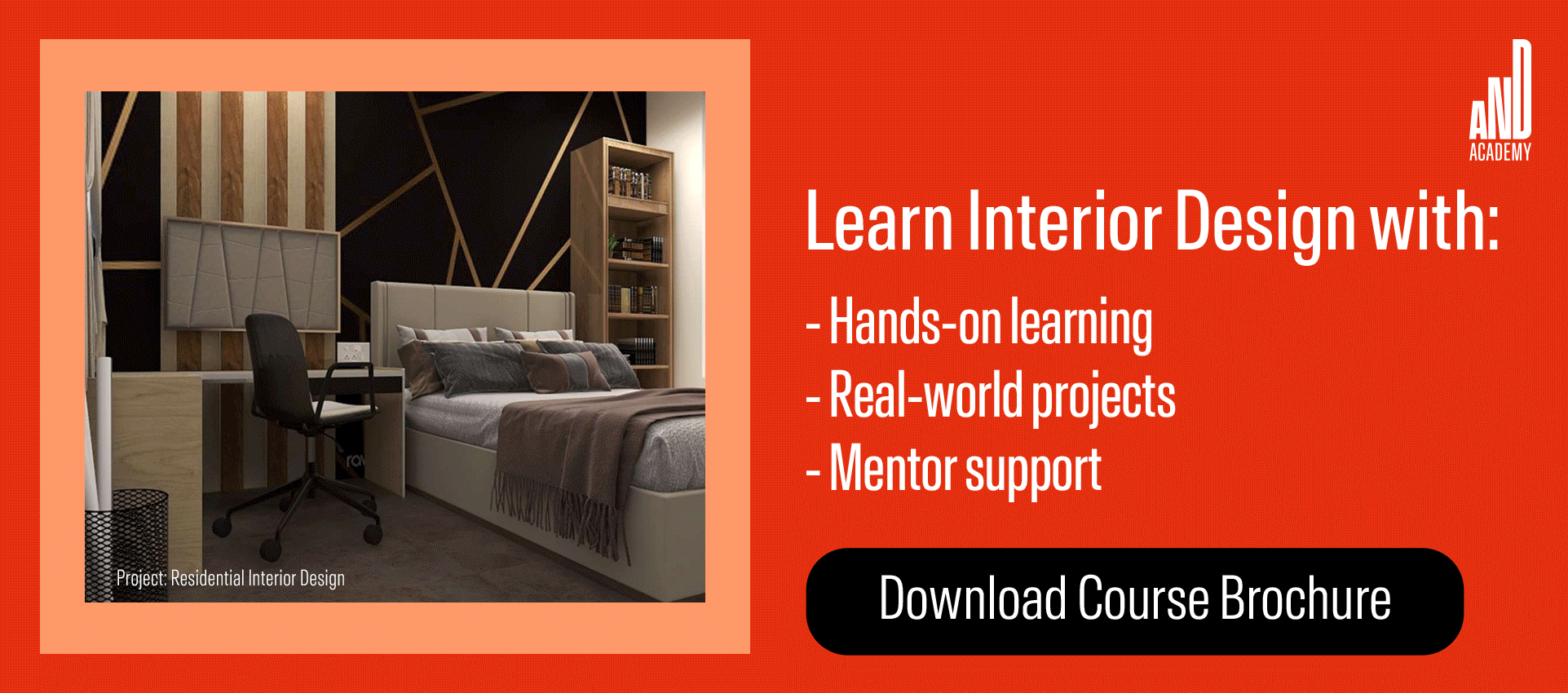
3. Interior designer salaries around the world, from junior to senior
Researching salaries is a good starting point for anyone looking to launch a new career. Here’s a breakdown of what entry-level, mid-level, and senior interior designers can expect to earn in different countries around the world.
|
Entry-level interior designer |
Mid-level interior designer |
Senior interior designer |
|
|---|---|---|---|
|
Brazil |
R$66.250 |
R$90.879 |
R$112.653 |
|
CAD $54,146 |
CAD $74,858 |
CAD $92,071 |
|
|
China |
¥127,128 |
¥173,884 |
¥216,171 |
|
France |
€38,133 |
€53,633 |
€64,843 |
|
Germany |
€19,920 |
€43,200 |
€68,640 |
|
India |
₹1,862,0 |
₹3,15,400 |
₹7,99,980 |
|
R139,953 |
R279,855 |
R335,004 |
|
|
£25,611 |
£37,022 |
£47,174 |
|
|
$53,603 |
$65,217 |
$76,645 |
4. Industries with the highest interior designer salaries
Are you curious to know which industries pay interior designers the highest? Here’s a compilation of the top-paying industries for interior designers.
The government sector
Interior designers who are hired by governments are typically responsible for designing or renovating the interiors of buildings owned by the country’s government. These buildings include town and city halls, cultural institutions, courtrooms, and assembly halls. An interior designer might be hired to design or redesign a building’s entire interior, or be commissioned to design one department or area, such as a library or a public eating space.
When working as a government interior designer, it’s important to note that all work undertaken is commissioned directly from the relevant governmental department, and usually not from the individuals who will primarily use the space. Traditional features and materials such as stone and marble are commonly adopted by government interior designers in order to create inspiring and majestic interiors.
Average salary range for government sector interior designers: $81,100 to $160,822.
The corporate sector
Contracted by large interior design firms or private institutions, corporate interior designers tend to work on creating streamlined, modern, and attractive workspaces and offices in accordance with the commissioning client’s preferences and needs.
The work of a corporate interior designer is largely dependent on the particular client they are working for and the number of employees the space is likely to host at any given time. This could range from 20 employees at a small firm, to hundreds working in the offices of a large conglomerate.
Other factors which influence office space interior design work include knowledge of fire safety codes, number of exits, number of visitors to the building, and the importance of creating a space that promotes productivity and staff well-being. Increasingly, corporate interior designers are expected to have knowledge of sustainable design practices and materials, as well as be able to implement measures which facilitate a sustainable working environment for employees going forward.
Average salary range for corporate sector interior designers: $51,775 to $70,000.
The hospitality sector
Interior designers who work in the hospitality industry typically design interiors for cafes, restaurants, clubs, gyms, hostels and hotels. As a public-facing, service-oriented sector, the interior design projects which businesses in the hospitality industry typically commission tend to focus on luxury materials, high-quality amenities, and accessibility. Budgets are usually high in this sector due to the value placed on crafting style-driven and welcoming interiors for patrons.
In addition to creating aesthetically pleasing spaces for guests or clients, maximizing the productivity of employees and the functionality of the space are also key objectives for hospitality interior designers. A skilled interior designer will seek to strike a balance between meeting the needs of guests, providing a functional and safe space for employees, and reflecting the values and look of a brand.
Average salary range for hospitality sector interior designers: $52,450 to $73,500.
The sustainability sector
Sustainability in architecture and interior design has gained increasing importance over the years as the impact of human behavior on climate change has become evermore evident. Due to this shift in public consciousness, environmentally-sustainable interior design solutions are frequently sought out by both businesses and homeowners hoping to make the lowest environmental impact possible during an interior design project. Sustainable interior designers work with such clients to advise on and enable the implementation of these solutions.
Some examples of sustainable practices in interior design include prioritizing the use of non-toxic, locally sourced materials for building or interior design projects, choosing energy-efficient appliances, reusing tools and materials, optimizing natural light sources, and implementing water-efficient fixtures.
Average salary for sustainability sector interior designers: $61,646
The healthcare sector
Working in hospitals, clinics, healthcare practices, and care homes, healthcare interior designers work within the limitations of tight building code regulations and laws to provide an environment that is calming, ergonomic, accessible, highly functional, and sterile for healthcare professionals, patients, and visitors. While safety must always come first, boosting the well-being of patients through the implementation of tasteful color palettes, fabric choices, art, decoration, and natural lighting is also a key part of the healthcare interior designer’s role.
Average salary for healthcare sector interior designers: $70,108
The residential sector
When you think of an interior designer, the first thing that comes to mind is probably a residential interior designer. These professionals, who work primarily with homeowners on designing or renovating the interior of their houses or apartments, are the most common type of interior designers and can work as freelancers or for interior design companies. Residential interior designers usually work very closely with their clients on every stage of the project and, unlike corporate or commercial interior designers, can often have more flexibility when it comes to their creative input. However, the amount of client collaboration that is sometimes expected or desired by clients can be seen as a disadvantage of working in residential interior design. Due to the amount of client-designer coordination involved in this role, those considering a career in residential interior design should have strong diplomacy and communication skills.
Average salary range for residential sector interior designers: $47,990 to $69,000
The commercial sector
Working in part alone and in part collaboratively with corporate interior designers (and even, on occasion, with hospitality interior designers), commercial interior designers work to design and renovate indoor spaces frequented by the general public, such as shopping malls, cinemas, and shops. The focus of commercial interior design lies in providing high rates of consumer satisfaction in addition to reflecting a brand’s identity and values in its interior design. A commercial interior designer will be especially knowledgeable in regard to the types of design choices which best attract customers and boost sales, as well as have a good understanding of the consumer psychology involved in creating a positive and welcoming atmosphere for all visitors to a space. Having intimate knowledge of building codes, fire safety, and enabling accessibility for all also play important roles in the commercial interior design arena.
Average salary range for commercial sector interior designers: $53,500 to $70,000.

5. Factors that can impact an interior designer’s salary
As we all know, salaries are dependent on a number of different factors, from where in the world you are based to how many years you’ve been in the business. When you’re considering a salary offer, it’s important to take all these factors into account in order to make the right decision for you. Let’s delve into a bit more detail about how these factors can impact your salary.
Experience level
The amount of experience you’ve accumulated over the years will play a huge role when it comes to what kind of salary you can expect to be offered by an interior design company. As we have seen from our rundown of salaries, the difference between what an entry-level interior designer earns on average, and what a senior interior designer earns on average is stark. This is because in this profession experience counts for a lot. While an entry-level interior designer may be working in the field for the first time, or have only just finished studying, a senior interior designer could have between eight and ten years in the field under their belt.
Location
Your location will influence your salary, too. The cost of living in your area–average rents, food prices, transport costs–will influence how high or low average salaries are across all local industries, including interior design. Be sure to research an area thoroughly before accepting a new job by looking into the local rental market, public transport, and energy costs in order to be sure that the salary you are being offered accurately mirrors average salaries across the board and enables you to have the quality of life you would expect.
Qualifications and training
In addition to experience, having the appropriate qualifications through industry relevant interior design courses will be extremely important to potential employers. They’ll want to see not only that you’ve got the required up-to-date industry knowledge and training, but that you are committed to this career choice and are potentially open to further learning, should it be necessary. A course or degree certificate will demonstrate your suitability for a role, showcase what you have studied, and provide an indication of your aptitude. Don’t forget to mention any additional courses you’ve taken to boost your skills–a potential employer will definitely want to hear about them!
6. How much do freelance interior designers earn?
If you’re dreaming of working for yourself as a freelance interior designer then your earning potential will be somewhat different from those with full-time, in-house roles. As a self-employed person, you will have the freedom to pick the projects you want to work on, choose who you work with, and decide how much of your time is spent on projects. It’s worth bearing in mind that you won’t have the stability that comes from having a single employer–or the regular wages that come with that–but, for many, the autonomy that comes with freelance work outweighs these minor disadvantages. While it’s certainly true that going freelance is no walk in the park–you’ll likely be responsible for your own tax and health insurance contributions–it can certainly be a liberating option for those craving independence in their working lives. For some, it can even mean having access to greater earning opportunities than working in-house for one company.
Here are some of the average freelance interior design salaries across the world for you to take a look at.
|
Country |
Average freelance interior designer yearly salary |
|---|---|
|
Canada |
CAD $54,962 |
|
France |
€30 and €80 (per hour) |
|
India |
₹ 4.0 Lakhs |
|
United Kingdom |
£31,535 |
|
Canada |
CAD $54,962 |
|
France |
€30 and €80 (per hour) |
|
United States |
$63,405 |
7. How to handle your interior designer salary negotiation
Salary negotiations are not something that many of us look forward to. However, knowing how to request the salary you deserve is an integral part of managing a successful career. Before you go into your interior designer salary negotiation, here’s our advice to ensure a smooth and successful discussion.
Align your salary request with the market
Before you start the negotiation itself, you’ll need to do some research (like reading this blog post!) around the salaries for interior designers with your level of expertise working in your area. Try to find as many sources as you can and, where possible, speak to those already working in the industry to get a feel for what sort of salary you can expect. When it comes to picking a salary to ask for, try to base your request on the numbers you’ve uncovered in your research, rather than relying on what you think you should be earning or what you’ve earned in the past.
Be specific
It’s advisable to enter your salary negotiation with a specific figure in mind in order to obtain the best results. Why? Because research shows that candidates with precise salary requests appear to be better informed, which in turn prompts more minor adjustments from the recipients when it’s time for them to produce their counter-offer.
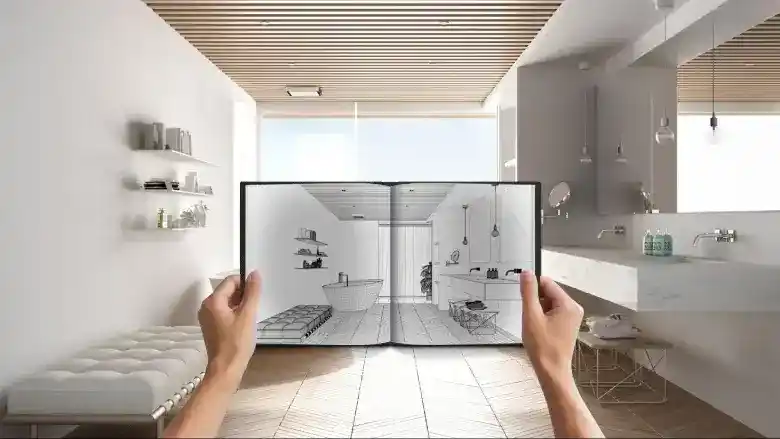
8. What do interior designers do and what skills do they need?
Interior design is a field primarily concerned with the aesthetic enhancement and optimal functionality of indoor spaces, be they homes, offices, retail outlets, entertainment centers, public institutions, or otherwise. Let’s take a look at what an interior designer’s role involves and the skills they need in order to succeed in this creative and rewarding field.
The role of an interior designer
An interior designer works according to the principles of interior design to make indoor spaces safe, attractive, accessible, and functional. In addition, they seek to meet the aesthetic preferences and requirements of the clients they are working for, and to meet the needs of those who may use or visit a space, such as clients, business partners, customers, or patients.
In order to enhance or improve an interior, the designer will use their extensive knowledge of materials and tools to make informed decisions about the furniture, accessories, lighting, and paint or wallpaper colors with which to furnish a space. As well as working to interior design principles, they will use their knowledge of sustainability best practices, current trends in interior design, health and safety legislation, and how to optimize and complement the available space in order to create the ideal environment for their client.
An interior designer is expected to work closely and collaboratively with both clients and any contract workers who might be needed to execute their design. Effective communication with clients in this role is crucial because having a full understanding of a client’s needs, desires, goals, and motivations–in addition to any accessibility issues or limitations–will inform and shape the final design.
The skills of the interior designer
Interior design is a highly skilled profession which requires a multitude of hard and soft skills from those seeking to work in the field. From creativity, attention to detail, and knowledge of trends and principles, to organization, communication, and planning skills, the work of the interior designer requires both exceptional project management acumen and an eye for creating aesthetically pleasing spaces. In addition, knowledge of CAD (computer aided design), sustainable practices, and different materials and resources are a necessity for those looking to enter this industry.
9. Different roles within the interior design space
Curious to know about other roles that are available in the interior design industry at large? Here’s an overview of some careers you might want to consider once you’ve got interior design skills under your belt.
Interior decorator
An interior decorator seeks to improve the aesthetics of an indoor space through the implementation of carefully chosen furniture, fabrics, accessories, and color palettes, while adhering to specific client requirements. Their ultimate goal is to create a beautiful environment for those who inhabit the space.
Color consultant
Using their knowledge of color psychology (how specific colors impact or change behavior) and color theory (how different colors mix together), color consultants advise their clients on the right shades and colors to choose for their home and assist them in meeting their interior design goals.
Lighting designer
Lighting designers concept lighting plans for both residential and commercial spaces with the goal of beautifying and enhancing the interior of the building. They are also responsible for ensuring that a space is correctly lit in accordance with its needs, as well as building and design codes that need to be adhered to.
Kitchen designer
Kitchen designers work directly with clients–typically homeowners, but business owners too–to discuss how best to create, renovate, or update their kitchens and dining areas before creating designs that best reflect the intended usage of their clients. Specialist knowledge of fitted kitchens, fixtures, plumbing, and appliances is needed in this role in order to best meet client needs.
Landscape architect
Working on projects in outdoor areas such as parks, playgrounds, university campuses, public spaces, and gardens, landscape architects work closely with clients and building architects to design and create attractive, accessible, and functional areas for both the general public and clients to enjoy. Within these environments, they will also plan the implementation of paths, plants, trees, outdoor buildings, entrances, and exits, and be responsible for overseeing contractors.
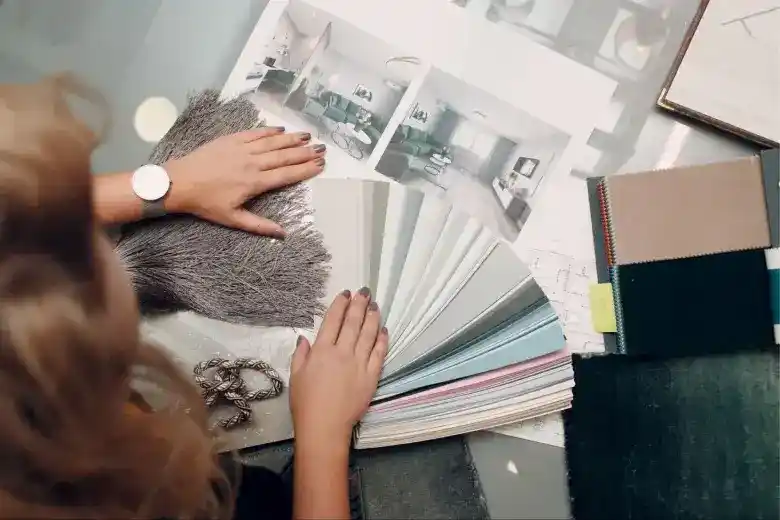
10. Step-by-step guide to landing a job in interior design
We’ve put together some simple steps that you can follow in order to build the right combination of skills and experience needed to land your first position.
Do your research
If you’re at the very beginning of your interior design journey, you’ll need to start reading up on the field. Luckily, there are lots of free and low-cost options, such as blogs, podcasts, and books, available to help with your research. These resources are often produced by experts in the field and designed for both beginners in interior design and those more experienced. Let’s take a look at our favorite interior design blogs, podcasts, and books for 2023.
Blogs
Free to access, filled with industry information, and updated with the latest trends in interior design, blogs are an ideal way to learn more about careers in the field and stay abreast of the industry as a whole. Here are the blogs we’d recommend reading:
- Architectural Digest
- House Beautiful
- Interior Style Hunter
- Decor8
- Decorilla
- Apartment Therapy
- Houzz
- Hospitality Design
- Interior Design Magazine
- Interiors & Sources
- Metropolis
Podcasts
Podcasts can be a great way to hear interior design experts talk in detail about their favorite subjects related to the industry. They’re also up-to-date and packed with advice for others. Here are some of the ones we’d recommend.
- The Modern House Podcast
- The Chaise Lounge
- A Well-Designed Business
- The Great Indoors
- At Home With Lauren Keenan
- Dear Alice
- The Interior Design Business
Books
Finally, when it comes to gaining deep expert insights and learning the full history of interior design, books are an excellent way to onboard the information you need. Try these ones for size.
The Interior Design Handbook
Live Beautiful
New York School of Interior Design: Home: The Foundations of Enduring Spaces
Inspired Design: The 100 Most Important Designers of the Past 100 Years
Residential Interior Design: A Guide To Planning Spaces
The Interior Design Reference & Specification Book: Everything Interior Designers Need to Know Every Day
Interior Construction & Detailing for Designers and Architects
Time-saver Standards for Interior Design and Space Planning
Take a course
Once you’ve explored the topic and dug into the resources we’ve provided here (as well as your own), it’s a good time to start thinking about taking a more formalized course of study to cement the knowledge you’ve acquired and to build on it. There are many courses out there for those interested in studying interior design, from online courses and colleges with evening classes right up to full-time degree programs.
When considering which course of study is right for you, it can be helpful to make a list of your priorities.
Are you looking for a course that’s flexible, or one with a fixed timetable and curriculum? While it’s becoming more common for universities to offer online or hybrid degrees, shorter, online courses tend to be more flexible in general in terms of when students work on their assignments and attend classes.
Are you hoping to study at a well-known institution or is the content of the course more important to you? While universities often come with prestige, they can sometimes be more tedious to update in terms of their course content when compared to short, online courses which can be quickly updated.
You’ll also want to consider your budget and how much you can afford to spend on your studies. Degree courses typically cost considerably more than college classes or an online diploma. However, depending on where in the world you are, grants, state support, or student loans may be available.
While a degree program will certainly be the most in-depth option for keen learners, usually with a heavy emphasis on theory and history, short courses can have the advantage of being both more hands-on and more up-to-date than their university-based counterparts. University degrees in interior design also tend to last for at least three years in most countries, while online or even in-person diplomas or courses have varying lengths, usually between a few months and a year, meaning students can start applying for their first positions in the field much sooner. Finally, having a degree from a well-known university certainly looks impressive on your CV and can be important to some employers, but it’s important to remember that these days many courses, both on and offline, offer full accreditation.
Complete a portfolio
As a designer, your portfolio is your ticket to jobs and opportunities; whether in digital form or physical, it’s a format for showcasing your skills and experience to potential employers and clients, and demonstrating why you’re the right person for the role you’re applying for.
If you’re taking a course to become an interior designer, then you’ll most likely be building a portfolio using your course projects and assignments with the guidance of your teacher or mentor. You can supplement this with any volunteer or freelance work that you pick up along the way. You can also add on to this portfolio using projects that you undertake in your own home, or projects you take on in the homes or businesses of friends and family.
Here are a few student projects by AND learners for reference:
- Residential Design Project by Pawanjot Singh
- Residential Design Project by Aakriti Sharma
- Commercial Design Project by Prathyusha Reddy
Build up experience
Once you’ve completed a formal course of learning–or even while you’re still studying–you’ll need to build up some professional experience to supplement your portfolio and hone your skills. Here are some of the options you can explore to help you do that.
Shadowing
Shadowing involves following and observing a professional interior designer as they go about their work. Depending on the preferences of the individual you shadow, you may be asked to assist with small tasks too. Shadowing is a great way to get a feel for what working in the field looks like in practice, and can also be an opportunity to get direct career advice from a professional interior designer. You’ll witness interactions between clients and the interior designer, learn how projects are planned and managed, and get to know how interior designers work with contractors and tradespeople.
When looking to shadow an interior designer, it would be wise to reach out to interior design companies as well as individual freelancers in the field. In your opening email or letter, explain your passion for the field, what you’ve studied so far, and how you might assist them.
Volunteering
Volunteering is a great way to build up your experience before you’ve established yourself as a professional interior designer. You can offer your services to a local charity or school or any organization which may not have the budget to pay for a renovation or redesign. An assignment like this will boost your confidence, offer numerous learning opportunities, and provide you with a successful project to add to your portfolio. You’ll also be providing a valuable service to your local community.
Projects in your own home or home of friends and family
Many professional interior designers begin their careers by working on projects in their own homes. While designing your own place, you can be more experimental, take your time on different projects, and not feel the pressure of dealing with client expectations or requests. You may want to expand to offering your services to friends and family too. As with the other work experiences we’ve outlined in this section, working on the interior design of your own home and the homes of those in your social circle will provide you with valuable experience as well as projects you can showcase in your portfolio. Another advantage of having a beautifully designed home is that, when you do have your own clients, you can host client meetings in a space that will inspire their own designs and give them confidence in your work.
Find your first position
Now that you’ve taken a course, created a portfolio, and got some experience under your belt, you’re ready to start looking for your first interior designer position. Here are our tips for finding the right role.
Networking
Networking, both in person and online, is an essential part of finding a job in the current climate. The more industry professionals you can meet and make a positive impression on, the more likely it is that you’ll be remembered when a position becomes available. You’ll also be able to get advice and potentially even mentorship from those who are further along in their interior design careers.
Networking can take many forms. It can mean connecting with other interior design professionals on LinkedIn or Instagram, or it can mean attending in-person meetups, panel talks, or presentations related to interior design. Check out events websites such as Meetup and Eventim to see what’s on in your area for interior designers.
Freelance gigs
Although you may not want to work as a freelancer forever, taking on freelance projects can be a great way to launch your interior design career before landing a permanent position. To get freelance work, you can:
- Contact friends, family, and former colleagues and let them know you’re available for freelance interior design work
- Create a simple website advertising your skills, outlining your availability, and showcasing the projects you’ve worked on. We recommend trying out Squarespace or WordPress
- Publish your availability and look for freelance gigs on LinkedIn
- Contact local businesses or organizations who may need design or redesign assistance for their interiors
Find vacancies
When you’re ready to apply for permanent in-house positions, you’ll need to have a polished CV, a completed portfolio, and be ready to craft role-specific cover letters for each advertised position. We recommend finding interior design job vacancies in the following places:
Jobs boards
Check out: Indeed, Monster, Naukri, Shine, LinkedIn, Stepstone, Glassdoor
Local interior design companies
Consider writing a prospective letter or email to local interior design companies, along with your CV and portfolio, inquiring into potential vacancies.
Trade magazines and websites
Focus your attention on industry-specific magazines and websites, such as Interior Design Magazine, Dezeen, Interior Design, and Business of Home, which also have job boards for interior design positions.
Conclusion
We hope our rundown of salaries and roles in interior design has given you food for thought as you contemplate your career in this creative industry. As we have seen, research is crucial to know the right salary for your level of experience and your area, while hands-on project experience combined with the right skills training will be crucial to landing your first position in the field.
If you’d like to learn more about training and careers in interior design, you’ll find more articles on the subject over on the AND Academy blog. Here are some additional resources that may be useful in your learning efforts:
- Watch this session by Snehanshu Mukherjee, Founding Partner at T.E.A.M and Mansi Almadi, an Interior Designer at Studio Lotus
- Talk to a course advisor to discuss how you can transform your career with one of our courses.
- Check out our Interior Design courses – all courses are taught through live, interactive classes by industry experts.
- Take advantage of the scholarship and funding options that come with our courses to overcome any financial hurdle on the path of your career transformation.
Note: All information and/or data from external sources is believed to be accurate as of the date of publication.




